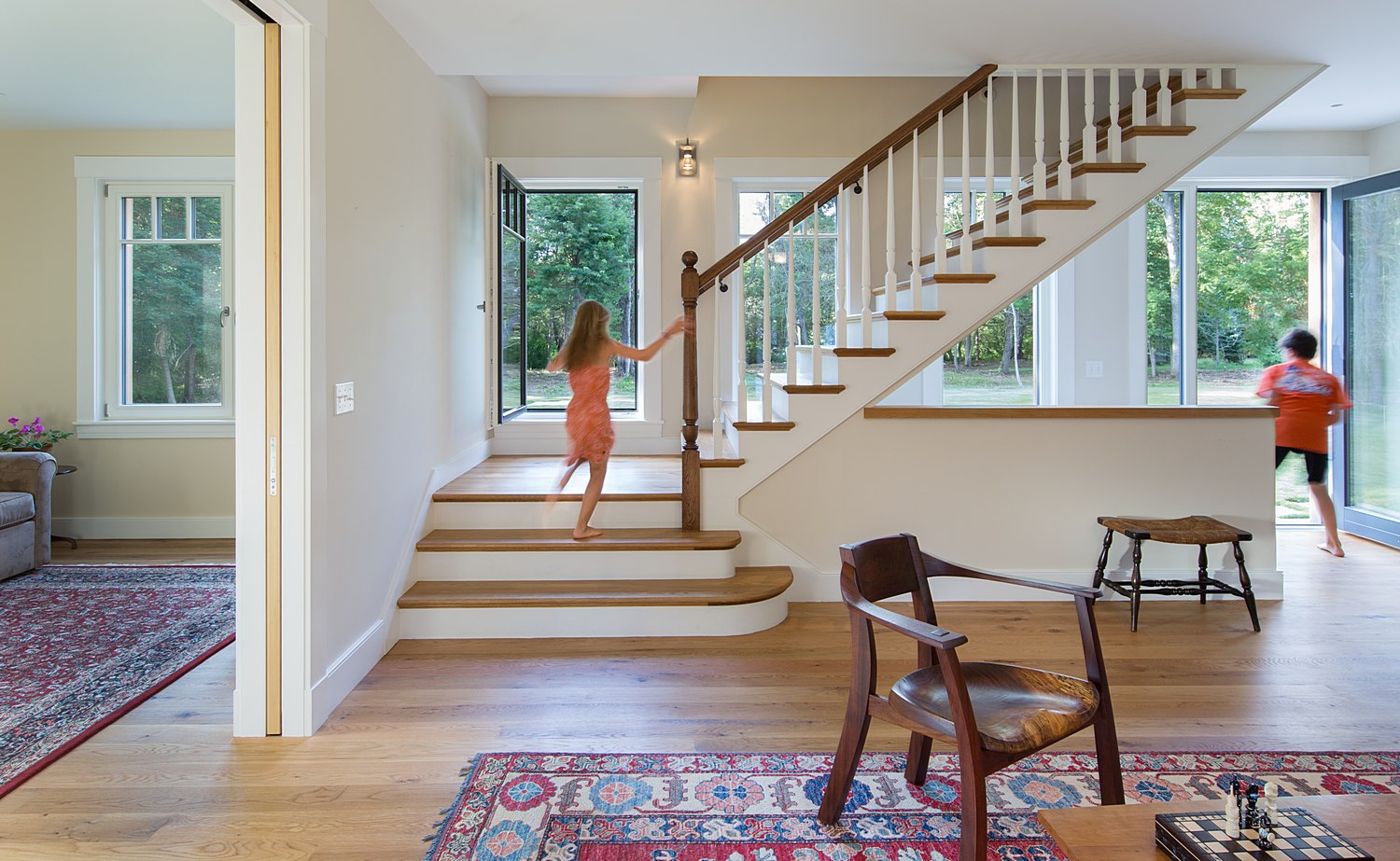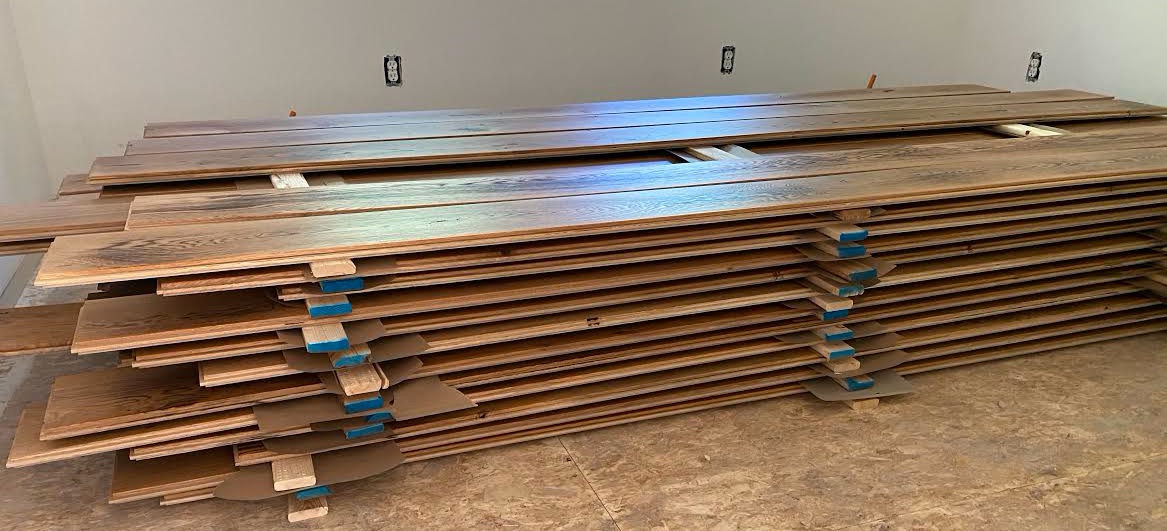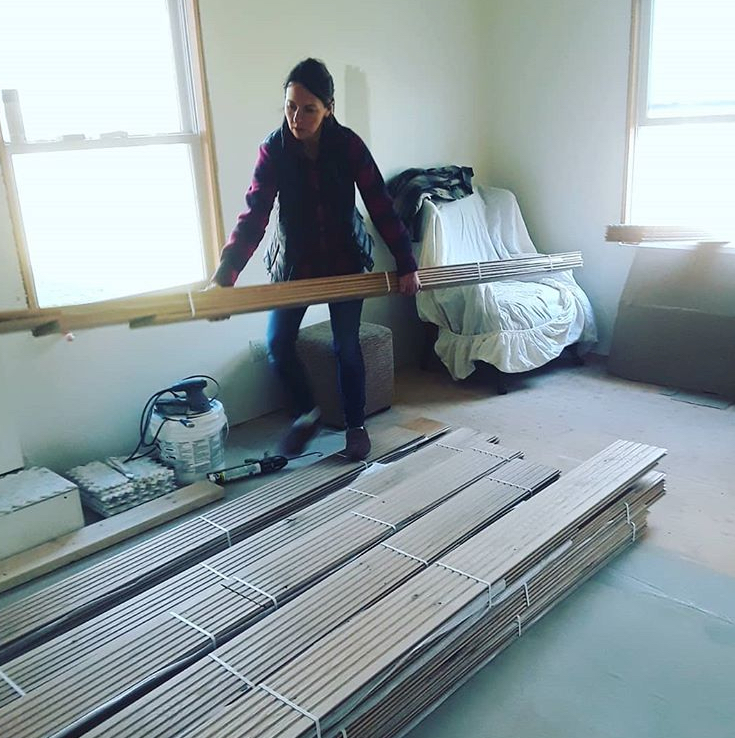Acclimating Hardwood Flooring
A Little Bit of Science, A Lot of Common Sense

The shipment of your new hardwood flooring just arrived and you are understandably chomping at the bit to get it installed, as it is likely the final detail in your home build or renovation project. After months of slow progress, you can practically taste the sense of completion.
But wait. What was that you heard about acclimating your wood floor before installation? What does acclimation even mean, and will you regret it if you skip it?
Acclimation is “the process of adjusting (conditioning) the moisture content of wood flooring to the environment in which it is expected to perform,” says the National Wood Flooring Association. Wood is hygroscopic, meaning it expands and contracts with moisture. Ideally, prior to installation, the flooring should be brought into equilibrium with the normal living conditions of the space it will inhabit. Without that conditioning, the beautiful wood floor you install today may be a disaster with the arrival of the next season, complete with the potential for dimensional distortion, excessive shrinkage or expansion, and structural damage.

The Science of Acclimation
Moisture content is a function of both the relative humidity and temperature of the surrounding air. The wood used in the flooring industry is generally dried to a moisture content between 6 and 9 percent using a combination of air and kiln drying. In a stable environment in which the wood is neither gaining nor losing moisture, equilibrium moisture content has been reached. In a non-stable environment with longer-term fluctuations in humidity and temperature, the impact on the flooring can be dramatic.
Time is Not Necessarily the Best Guide
The process of achieving equilibrium moisture content is unfortunately fraught with confusion, mixed messages, and even mis-information. The worst offender is the belief that one simply needs to leave flooring in the environment in which it will be installed for a set period of time. In fact, acclimation is dependent not on time, but on the environment in which the flooring will be installed. In some cases, time will be useful; in other cases, it will be unnecessary and even detrimental.
Far more critical is the moisture content of the flooring in relation to the moisture content of the surroundings, best measured by testing with a properly calibrated wood moisture meter both the plank flooring and the subfloor on which the flooring will be laid. Acclimated wood flooring would not have more than a two-percent moisture content difference from the subfloor.
Climatic Considerations
Additionally, installers should be thinking more holistically about the specific location in which the flooring will be installed.
- What is the climate in your location?
- What season is it?
- What are the seasonal variations in temperature and humidity?
- To what extent does the home rely on HVAC for climate control, or will the interior conditions fluctuate in consort with the exterior environment?
These variables will affect the speed with which acclimation occurs, and provide a sense of what might take place in the future.
For example, in New England where Vermont Plank Flooring is based, winters are cold and dry, while summers are warm and humid, prompting the potential for sizable seasonal expansion and contraction. In the winter, in a home heated by dry wood heat, the acclimation period will likely be fairly lengthy, while in the summer, with no air conditioning in the structure to control for temperature and humidity (as with many northern homes), acclimation may be almost instantaneous since the moisture content of the hardwood flooring and subfloor may already be within 2 percent of one another.

Recommended Acclimation Process
Establishing consistent current living conditions at the jobsite is the critical starting point. This means that air conditioning or heating systems have been running for at least five days, creating an ideal environment of 60-80 degrees at 35-50% relative humidity, with certain geographic exceptions. If air conditioning is not yet (or will not be) installed, fans and dehumidifiers should be utilized to mimic normal living conditions. If it is a new construction site, the building should be completely enclosed with all windows and doors installed, and all wet construction elements – such as plastering, drywall, or concrete – should be completed and dry.
The hardwood flooring planks will arrive with approximately 7 percent moisture content. Test the moisture content of the subfloor at multiple locations (recommended 40 tests per 1000ft) to get a baseline. If the subfloor measures 12 percent moisture content, you need to bring the flooring planks to within 2 percent of that. To acclimate effectively, the planks should be unpacked from their boxes and stacked to allow air circulation on all sides. If the moisture content of the subfloor and new planks are within 2 percent right off the bat, we still recommend 48 hours for the floor to get comfortable in its new environment.
For engineered hardwood flooring, some people mistakenly believe that the product’s greater structural stability eliminates the need for acclimation. Though it is true that engineered products do not swell and shrink with environmental fluctuations as much as solid hardwoods, they do still have the capacity to expand and contract. As such, they also should be acclimated to the surrounding environment, as judged by comparative moisture reading between the flooring and the sub-floor, even if the subfloor is concrete. Engineered floors are particularly susceptible in extremely dry locations, so that climatic concern should be taken into account.
Follow the Directions and Communicate with Your Contractor
If you're not experienced with the process, hire a professional installer, and talk to them about the acclimation process. Make sure they understand the concept of equilibrium moisture content and speak holistically about the greater climatic concerns of your location. If they acclimate based only on a set time length, or if they insist on installing before establishing current living conditions because they are behind schedule, consider finding a new installer. Hardwood flooring is a big investment, and you’ve only got one shot to get it right.







